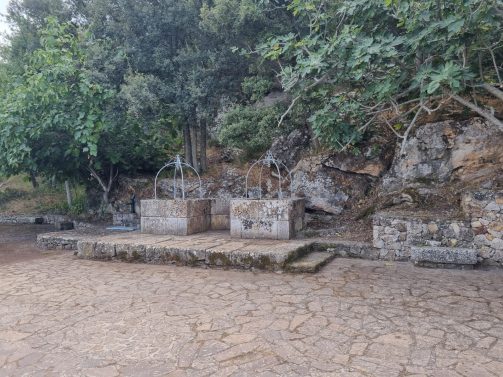The 1870 map of the settlement of Segariu does not indicate its presence, probably because it was still a natural spring without masonry and had nothing to do with wells.
It is the natural spring and the site that tradition records as the first home of goatherd Pietro Pinna, who is credited with the re-founding of Segariu in 1575 after decades of neglect.
Today it is called Sa Mitza de S’Arei, as herds were brought in to water. It is located under the rocky ridge near St. George’s Church at the end of Church Street.
They are now two communicating fountains, built in masonry in 1913 by then Mayor Collu Giuseppe. Stone paving around the two fountains and landscaping of the small square were done in 1987. To the right of them is a small shelf, called Sa Cotti dei Burricus, while to the left was the beginning of the driveway leading to Pala Pronis and Surai, now replaced by concrete steps. German soldiers had camped in that area during World War II; some say they hid some crates of money during the retreat.
Both the soldiers and the people living nearby found protection from air raids in a shelter under rock, which is currently almost completely enclosed by a concrete wall, built a few years ago to prevent collapse of the cliff face. Near them were two lime kilns, one on the right, completely destroyed, and the other on the left fairly intact. A few meters below, to the right, was the ancient church of St. Michael, no longer extant, which tradition points to as the first parish of the new Segariu.
A number of square parallelepiped stone blocks were placed on the site for use as seats, two of which had the small rounded side and were engraved with the initials “CCL” of uncertain meaning. These seats were the old benches and edges of the two banks of the Paudi River in Republic Square that were removed in the 1980s during the work to cover the square to make way for iron benches, and probably the engraved letters are the initials of the stonemason who worked during the reclamation of 1920.









